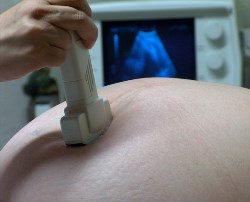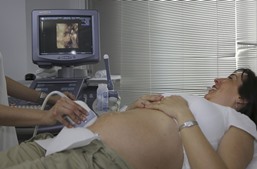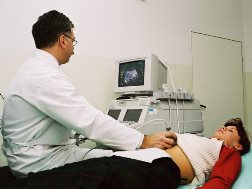How to Pick the Best Ultrasound Tech School near Big Timber Montana
 Once you have made a decision to pursue an ultrasound technician degree near Big Timber MT, the next step is to start the process of picking a college. To begin with, you have to find the right program that will furnish the necessary instruction to become a qualified professional. And given that a number of states do require that sonographers be either certified or licensed, depending on your residence you may also need to be prepared to pass a licensing or certification examination. So it’s very important that you research each school in order to evaluate and compare your choices. But exactly where does one begin? A number of students will start by searching for colleges that are within driving distance of their residences and then by comparing tuition. Naturally location and cost must be taken into account when making a decision, but there are other significant factors as well. For example, if the ultrasound technician schools have earned accreditation or if they provide internships. These and other qualifications will be addressed more in detail later in this post. But first, let’s go over what an ultrasound tech does and the credentials and online education options that are offered.
Once you have made a decision to pursue an ultrasound technician degree near Big Timber MT, the next step is to start the process of picking a college. To begin with, you have to find the right program that will furnish the necessary instruction to become a qualified professional. And given that a number of states do require that sonographers be either certified or licensed, depending on your residence you may also need to be prepared to pass a licensing or certification examination. So it’s very important that you research each school in order to evaluate and compare your choices. But exactly where does one begin? A number of students will start by searching for colleges that are within driving distance of their residences and then by comparing tuition. Naturally location and cost must be taken into account when making a decision, but there are other significant factors as well. For example, if the ultrasound technician schools have earned accreditation or if they provide internships. These and other qualifications will be addressed more in detail later in this post. But first, let’s go over what an ultrasound tech does and the credentials and online education options that are offered.
Click Here to Get Free Information on Ultrasound Technician Schools!
Ultrasound Technician Job Summary
 There are various acceptable titles for ultrasound techs (technicians). They are also referred to as sonogram techs, diagnostic medical sonographers (or just sonographers) and ultrasound technologists. Regardless of name, they all have the same basic job description, which is to carry out diagnostic ultrasound procedures on patients. Even though a number of techs work as generalists there are specializations within the field, for example in pediatrics and cardiology. Most practice in Big Timber MT hospitals, clinics, outpatient diagnostic imaging centers and even private practices. Standard daily work functions of an ultrasound tech can involve:
There are various acceptable titles for ultrasound techs (technicians). They are also referred to as sonogram techs, diagnostic medical sonographers (or just sonographers) and ultrasound technologists. Regardless of name, they all have the same basic job description, which is to carry out diagnostic ultrasound procedures on patients. Even though a number of techs work as generalists there are specializations within the field, for example in pediatrics and cardiology. Most practice in Big Timber MT hospitals, clinics, outpatient diagnostic imaging centers and even private practices. Standard daily work functions of an ultrasound tech can involve:
- Preserving records of patient medical histories and details of each procedure
- Counseling patients by explaining the procedures and answering questions
- Readying the ultrasound machines for usage and then cleaning and re-calibrating them
- Moving patients to treatment rooms and making them comfortable
- Utilizing equipment while minimizing patient exposure to sound waves
- Reviewing the results and identifying need for supplemental testing
Ultrasound techs must frequently evaluate the performance and safety of their equipment. They also must adhere to a high professional standard and code of conduct as medical practitioners. In order to maintain that degree of professionalism and remain current with medical knowledge, they are required to enroll in continuing education training on a regular basis.
Sonogram Technician Degrees Offered
 Sonogram tech enrollees have the choice to earn either an Associate Degree or a Bachelor’s Degree. An Associate Degree will usually involve around 18 months to 2 years to finish depending on the course load and program. A Bachelor’s Degree will require more time at as long as 4 years to complete. Another option for individuals who have previously received a college degree is a post graduate certificate program. If you have earned a Bachelor’s Degree in any major or an Associate Degree in a relevant medical field, you can enroll in a certificate program that will require only 12 to 18 months to finish. Something to bear in mind is that most ultrasound technician colleges do have a practical training component as part of their curriculum. It can often be satisfied by taking part in an internship program which numerous colleges sponsor with Big Timber MT hospitals and clinics. Once you have graduated from any of the certificate or degree programs, you will then have to satisfy the licensing or certification requirements in Montana or whichever state you elect to work in.
Sonogram tech enrollees have the choice to earn either an Associate Degree or a Bachelor’s Degree. An Associate Degree will usually involve around 18 months to 2 years to finish depending on the course load and program. A Bachelor’s Degree will require more time at as long as 4 years to complete. Another option for individuals who have previously received a college degree is a post graduate certificate program. If you have earned a Bachelor’s Degree in any major or an Associate Degree in a relevant medical field, you can enroll in a certificate program that will require only 12 to 18 months to finish. Something to bear in mind is that most ultrasound technician colleges do have a practical training component as part of their curriculum. It can often be satisfied by taking part in an internship program which numerous colleges sponsor with Big Timber MT hospitals and clinics. Once you have graduated from any of the certificate or degree programs, you will then have to satisfy the licensing or certification requirements in Montana or whichever state you elect to work in.
Online Ultrasound Technician Classes
 As aforementioned, virtually all sonogram tech colleges have a practical requirement to their programs. So while you can earn a certificate or degree online, a substantial portion of the training will be either carried out in an on campus laboratory or at a sponsored off-campus medical care provider. Clinical training can often be fulfilled by means of an internship at a local Big Timber MT hospital, outpatient clinic or family practice. But the remainder of the training and classes can be attended online in your Big Timber home. This is especially convenient for those students that keep working while earning their degrees. Plus online schools are many times less costly than traditional options. Expenditures for study materials and commuting may be reduced as well. But similarly as with any sonography college you are reviewing, make sure that the online program you select is accredited. One of the most highly respected accrediting agencies is the Commission on Accreditation of Allied Health Education Programs (CAAHEP). Accreditation is especially important for licensing, certification and finding employment (more on accreditation later). So if you are disciplined enough to attend classes outside of the classroom in the comfort of your own home, then an online degree could be the right choice for you.
As aforementioned, virtually all sonogram tech colleges have a practical requirement to their programs. So while you can earn a certificate or degree online, a substantial portion of the training will be either carried out in an on campus laboratory or at a sponsored off-campus medical care provider. Clinical training can often be fulfilled by means of an internship at a local Big Timber MT hospital, outpatient clinic or family practice. But the remainder of the training and classes can be attended online in your Big Timber home. This is especially convenient for those students that keep working while earning their degrees. Plus online schools are many times less costly than traditional options. Expenditures for study materials and commuting may be reduced as well. But similarly as with any sonography college you are reviewing, make sure that the online program you select is accredited. One of the most highly respected accrediting agencies is the Commission on Accreditation of Allied Health Education Programs (CAAHEP). Accreditation is especially important for licensing, certification and finding employment (more on accreditation later). So if you are disciplined enough to attend classes outside of the classroom in the comfort of your own home, then an online degree could be the right choice for you.
What to Ask Sonogram Tech Colleges
 After you have decided on the type of degree or certificate that you would like to earn, you can initiate the procedure of evaluating and comparing ultrasound technician colleges. You will first probably want to choose whether you would rather attend classes online or commute to a school campus in the Big Timber MT area. Obviously location will be important if you choose the latter, and the cost of tuition no doubt will be an initial qualification also. But there are additional variables that you must also take into account, such as if the colleges are accredited and if they provide internship programs. Therefore in order to complete your due diligence so that you can make your final selection, below are several questions that you may want to ask each sonography college before deciding.
After you have decided on the type of degree or certificate that you would like to earn, you can initiate the procedure of evaluating and comparing ultrasound technician colleges. You will first probably want to choose whether you would rather attend classes online or commute to a school campus in the Big Timber MT area. Obviously location will be important if you choose the latter, and the cost of tuition no doubt will be an initial qualification also. But there are additional variables that you must also take into account, such as if the colleges are accredited and if they provide internship programs. Therefore in order to complete your due diligence so that you can make your final selection, below are several questions that you may want to ask each sonography college before deciding.
Are the Ultrasound Technician Programs Accredited? A large number of sonogram tech schools have received some form of accreditation, whether regional or national. However, it’s still crucial to confirm that the school and program are accredited. Among the most highly regarded accrediting agencies in the field of sonography is the Joint Review Committee on Education in Diagnostic Medical Sonography (JRC-DMS). Schools obtaining accreditation from the JRC-DMS have undergone an extensive review of their instructors and course materials. If the college is online it may also obtain accreditation from the Distance Education and Training Council, which focuses on online or distance learning. All accrediting agencies should be acknowledged by the U.S. Department of Education or the Council on Higher Education Accreditation. In addition to ensuring a superior education, accreditation will also assist in getting financial aid and student loans, which are frequently not accessible for non-accredited schools. Accreditation can also be a pre-requisite for licensing and certification as required. And numerous Big Timber MT employers will only hire a graduate of an accredited school for entry level positions.
Are Internships Sponsored? Ask if the ultrasound technician programs you are reviewing have relationships with Big Timber MT clinics or hospitals for internship programs. Internships are not only an excellent way to obtain hands on experience in a clinical setting, they are also a means to fulfill the practical training requirement for most programs. As a supplemental benefit, they can assist students and graduates develop professional relationships in the Big Timber medical community and help with obtaining employment.
Is Job Placement Help provided? You will undoubtedly want to secure employment quickly after graduation, but getting that first job in a new field can be difficult without assistance. Find out if the sonographer schools you are assessing have job placement programs and what their success rates are. High and rapid placement rates are a good indication that the schools have substantial networks and good relationships with Montana healthcare employers. It also confirms that their graduates are well regarded and in demand.
Where is the School Located? For many students, the college they choose will need to be within travelling distance of their Big Timber MT residence. Those who have decided to attend online classes naturally will not have to trouble themselves with the location of the campus. However, the availability of area internships will be of concern. Something to consider is that if you decide to enroll in a college that is out of state or even out of your local area, you may be required to pay a higher tuition. State colleges often charge higher tuitions for out of state residents. And community colleges normally charge a higher tuition to those students that don’t reside within their districts.
What are the Class Sizes ? Unless you are the type of student that likes to sit way in the rear of the classroom or get lost in the crowd, you will probably prefer a small class size. Smaller classes enable more individual participation and personalized instruction. Ask the colleges you are researching what the average student to teacher ratio is for their classes. If practical you may prefer to sit in on one or more classes before making your final determination. This will also give you an opportunity to speak with some of the instructors and students to get their opinions regarding the sonogram technician program as well.
Does the School Accommodate your Schedule? And finally you must verify that the sonographer college you finally choose can offer the class schedule you need. This is especially essential if you choose to continue working while attending classes. If you need to schedule night or weekend classes in the Big Timber MT area, check that they are offered. If you can only attend part-time, check if that is an option and how many credit hours or courses you would need to carry. Also, find out what the protocol is for making up any classes that you might miss because of illness, work or family emergencies.
Online Sonography School Big Timber Montana
 Picking the right ultrasound technician certificate or degree program is an important first step to initiating a fulfilling new career furnishing diagnostic services to patients. Ultrasound tech programs require that you have earned a high school diploma or a GED. In addition to satisfying academic requirements, you need to be in at least reasonably good physical condition, able to stand for extended periods and able to routinely lift weights of 50 pounds or more, as is it typically necessary to position patients and maneuver heavy machines. Additional beneficial talents include technical aptitude, the ability to stay collected when confronted by an anxious or angry patient and the ability to communicate clearly and compassionately. You originally came to this website due to an interest in Online Sonography School and wanting more information on Ultrasound Tech School Online Accredited. However, as we have addressed in this article, there are several questions that you need to ask each school you are considering. This is the case whether you choose an online degree or drive to the college campus to attend classes. And by asking the appropriate questions so that you can assess each college, you will be able to narrow down your choices until you are left with the ideal school for your education. And with the proper training, discipline and motivation to succeed, you can achieve your goal to practice as an sonographer in Big Timber MT.
Picking the right ultrasound technician certificate or degree program is an important first step to initiating a fulfilling new career furnishing diagnostic services to patients. Ultrasound tech programs require that you have earned a high school diploma or a GED. In addition to satisfying academic requirements, you need to be in at least reasonably good physical condition, able to stand for extended periods and able to routinely lift weights of 50 pounds or more, as is it typically necessary to position patients and maneuver heavy machines. Additional beneficial talents include technical aptitude, the ability to stay collected when confronted by an anxious or angry patient and the ability to communicate clearly and compassionately. You originally came to this website due to an interest in Online Sonography School and wanting more information on Ultrasound Tech School Online Accredited. However, as we have addressed in this article, there are several questions that you need to ask each school you are considering. This is the case whether you choose an online degree or drive to the college campus to attend classes. And by asking the appropriate questions so that you can assess each college, you will be able to narrow down your choices until you are left with the ideal school for your education. And with the proper training, discipline and motivation to succeed, you can achieve your goal to practice as an sonographer in Big Timber MT.
More Ultrasound Locations in Montana
Big Timber, Montana
Big Timber takes its name from Big Timber Creek, which was named by William Clark because of the large cottonwood trees.[5] The post office was established in 1880, closed, then reopened in 1882 with Ella Burns as postmaster.[6] As a stop on the Northern Pacific Railroad, Big Timber became a major wool-shipping depot. It became the county seat in 1895.[7] A fire in 1908 destroyed half the commercial buildings and a third of the residential homes.[7]
Big Timber has a cool semi-arid climate (Köppen BSk) bordering on a humid continental climate (Dfb). Although winters can be frigid, frequent chinook winds will raise temperatures above 50 °F or 10 °C on an average twenty days between December and February, and have raised them to or above 68 °F or 20 °C on ten occasions during these months since 1894.[9] The chinooks mean Big Timber's 31.3 days per year failing to top freezing is among the fewest in Montana, with the average window for such maxima being from November 11 to March 18.[9] In the absence of chinooks, temperatures fall to 0 °F or −17.8 °C on seventeen mornings during an average winter, although such temperatures were reached just once in 1999/2000 but as many as thirty-four times during the very cold winters of 1935/1936 and 1978/1979. The average window for zero temperatures is from December 4 to February 25. The coldest temperature in Big Timber has been −47 °F (−43.9 °C) during the notorious 1936 cold wave on February 15, whilst February 1936 was also the coldest month on record at 5.0 °F or −15.0 °C, shading January 1916 which averaged 5.5 °F or −14.7 °C.
Spring is typically windy with temperatures nearly so variable as in winter: the last frost typically arrives on May 19, but temperatures have reached 80 °F or 26.7 °C as early as March 22 of 1928 and have fallen to zero Fahrenheit as late as April 13, 1928 and April 12, 1997. Late in spring thunderstorms increase in frequency and during late spring and early summer these provide most of Big Timber's annual precipitation. The wettest calendar year since 1894 has been 1957 with 25.71 inches (653.0 mm) and the driest 1939 with 9.38 inches (238.3 mm), whilst the wettest single month has been May 1981 with 7.69 inches (195.3 mm)
